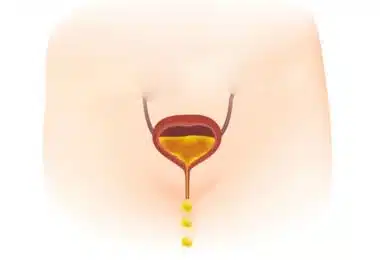
Common Pain and Complaints of Pregnancy
January 28, 2024
Uterine Prolapse – Diagnosis and Treatment Methods
January 28, 2024
Common Pain and Complaints of Pregnancy
January 28, 2024
Uterine Prolapse – Diagnosis and Treatment Methods
January 28, 2024
Urinary Incontinence in Women - Diagnosis and Treatment Methods
Urinary incontinence is a condition of sudden and involuntary and uncontrollable urinary incontinence due to the effect of various factors. Its medical name is urinary incontinence. Many factors such as bladder infection, bladder stones, bladder prolapse, menopause, obesity, genetic diseases, Parkinson's disease, diabetes, depression can cause urinary incontinence. Although it is more common in older ages (it is not a normal result of aging), it is a common problem that can be seen at any age.
The fact that the genital area is constantly wet due to urinary incontinence and prepares the environment for the formation of bacteria can cause recurrent urinary tract infections with redness, rashes and wounds.
In addition, this embarrassing and uncomfortable condition, which leads to deterioration in the social and psychological status of the individual, is more common in women than men, but it is considered a disease when it is repeated continuously and negatively affects the quality of life of the person. The problem of urinary incontinence, which can reach dimensions that adversely affect the quality of life, is treated with various treatment methods.
Urinary System and Urinary Incontinence
Bladder; It is a bag that stores and empties urine comes from the kidneys and has its own working mechanism. It is located in the lower anterior part of the uterus. The urethra (urinary canal), which is shorter in women than in men, is the channel that drains urine to the outside. In the urinary canal, there are mechanisms called urine-retaining sphincters, one of which is located at the outlet of the bladder and provides involuntary, that is, automatic control, and the other is located in the middle. Urinary system works in coordination with the brain, nervous system and female hormones. Urine comes from the kidneys gradually begins to fill the bladder. Since the bladder has an elastic structure, it expands, prevents increase of the pressure, and the urine coming from the kidneys continues to empty into the bladder (up to 500 ml of urine can be stored in the bladder in normal individuals). After urine bladder comes full and as a result of the stimuli sent to the brain through the nervous system, the brain sends signals that will prevent the contraction of the bladder and ensure urine retention. When the bladder is filled with urine, the brain stimulates the individual to go to the toilet and emptying is achieved. Urinary incontinence occurs as a result of weakening or damage to the pelvic floor and bladder muscles due to various factors or disruption of the bladder stimulation/contraction system.
Causes and Symptoms of Urinary Incontinence in Women
Urinary incontinence can be caused by many factors. Obesity, diabetes, urinary tract infections, Alzheimer's, stroke, menopause, genetic causes, bladder prolapse, constipation, medications (muscle relaxants, blood pressure lowering, diuretic, etc.) surgeries, hormone deficiency, weakening of the muscles, loss of elasticity of the tissues, difficult births may cause problems in the functions of the bladder and urination mechanisms.

Image-1: Urinary incontinence in women.
Symptoms of urinary incontinence are involuntary drips or sudden leakage of urine.
Types of Urinary Incontinence in Women
Stress urinary incontinence; It is the most common type of urinary incontinence in women. It is an involuntary urinary incontinence condition seen when intraabdominal pressure increases while laughing, coughing, walking, sneezing, exercising, lifting heavy objects.
Urge urinary incontinence; It is a condition of involuntary urinary incontinence without being able to reach the toilet as a result of sudden urgency to urinate. It is caused by uncontrolled contraction of the bladder.
Mixed type urinary incontinence; It is a condition in which stress type and urge type urinary incontinence coexist.
Overflow urinary incontinence; It is a small amount of urine leakage without feeling the need to urinate even though the bladder is filled above its capacity.
Methods of Diagnosing Urinary Incontinence in Women
The type of urinary incontinence and where the problem originates will be revealed after detailed examinations and tests by the doctor.
Many of the causes can be found as a result of good examination and questioning without the need for further examinations.
In addition to a good examitation, methods such as blood analysis, urinalysis, cystometry, cystoscopy, EMG test, pelvic ultrasound, tomography and MRI may be needed to make the differential diagnosis.
konulabilmesi için gerekebilir.
Urinary Incontinence Treatment Methods in Women
In order to have a high success rate in treatment, it is important to determine the type of urinary incontinence.
Methods of treatment of urinary incontinence in women; It can be divided into three groups: drug therapy, lifestyle modification and surgical treatment.
Changing the lifestyle makes important contributions in the treatment of simple urinary incontinence problems. Quitting smoking, getting rid of excess weight, preventing excessive fluid intake and especially pelvic floor exercises can eliminate the problem.
Drug treatments can be used in some urinary incontinence problems. Positive results can be obtained when applied together with lifestyle changes.
Surgical treatment is applied in some urinary incontinence problems. Surgical applications are effective and common in stress urinary incontinence.
The problem of urinary incontinence, which is more common in women than men, is among the health problems hidden by the individual in the society. This situation, which is embarrassing and uncomfortable, can make women's daily lives unbearable. By determining the underlying cause, this problem can be ended with the appropriate treatment method.

